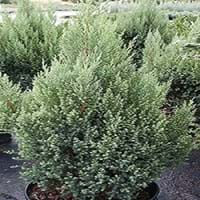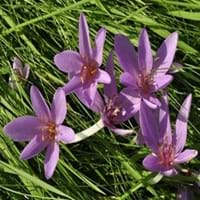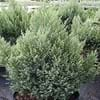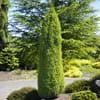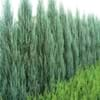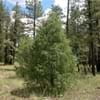Life Span
Annual
Perennial
Type
Needled or Scaled Evergreen
Bulb or Corm or Tuber
Origin
China, Japan
Hybrid origin
Types
Juniperus Communis, Juniperus brevifolia, Juniperus brevifolia
boissieri , cupanii , hungaricum , kesselringii
Number of Varieties
Not Available
Habitat
Sandy areas, Well Drained
Temperate Regions
USDA Hardiness Zone
3-9
Not Available
AHS Heat Zone
9-1
Not Available
Sunset Zone
1a, 1b, 2a, 2b, 3a, 3b, 4, 5, 6, 7, 8, 9, 10, 11, 12, 13, 14, 15, 16, 17, 18, 19, 20, 21, 22, 23, 24
21,22
Habit
Pyramidal
Clump-Forming
Flower Color
Not Available
Purple, Violet
Flower Color Modifier
Bicolor
Bicolor
Fruit Color
Not Available
Not Available
Leaf Color in Spring
Green, Blue Green, Gray Green
Green
Leaf Color in Summer
Green, Blue Green, Gray Green
Light Green
Leaf Color in Fall
Green, Blue Green, Gray Green
Several shades of Green
Leaf Color in Winter
Green, Blue Green, Gray Green
Light Green
Leaf Shape
Needle like
Long Linear
Plant Season
Spring, Summer, Fall, Winter
Spring, Fall
Sunlight
Full Sun
Full Sun, Partial Sun
Growth Rate
Medium
Medium
Type of Soil
Loam, Sand
Loam
The pH of Soil
Acidic, Neutral, Alkaline
Acidic, Neutral
Soil Drainage
Well drained
Well drained
Bloom Time
Not Available
Late Summer, Early Fall
Tolerances
Drought
Drought
Where to Plant?
Container, Ground, Pot
Ground
How to Plant?
Rooted stem cutting
Divison, From bulbs, Seedlings
Plant Maintenance
Medium
Medium
Watering Requirements
Needs very little water
Keep ground moist
In Summer
Lots of watering
Lots of watering
In Spring
Moderate
Moderate
In Winter
Average Water
Average Water
Soil pH
Acidic, Neutral, Alkaline
Acidic, Neutral
Soil Type
Loam, Sand
Loam
Soil Drainage Capacity
Well drained
Well drained
Sun Exposure
Full Sun
Full Sun, Partial Sun
Pruning
Prune back the growing tips, Prune if you want to improve plant shape, Remove damaged leaves, Remove dead branches, Remove dead leaves
no pruning required
Fertilizers
All-Purpose Liquid Fertilizer, Apply 10-10-10 amount
All-Purpose Liquid Fertilizer
Pests and Diseases
Red blotch
Dry root rot, Pest Free
Plant Tolerance
Drought
Drought
Flower Petal Number
Single
Single
Foliage Texture
Medium
Coarse
Foliage Sheen
Glossy
Glossy
Attracts
Wildlife
Whiteflies
Allergy
Headache, Itchiness, Pain and fatigue, Pollen, Rhinitis, wheezing
Poisonous to grazing animals
Aesthetic Uses
Borders, Showy Purposes
along a porch, deck or patio, Borders, Mixed Border, small hedge
Beauty Benefits
Not Available
No Beauty Benefits
Environmental Uses
Air purification
Air purification
Medicinal Uses
Antibacterial, Arthritis, Eczema, Psoriasis, Rheumatism, Snakebite
anti rheumatic, cathartic
Part of Plant Used
Not Available
Root
Other Uses
Used as essential oil
Showy Purposes
Used As Indoor Plant
No
No
Used As Outdoor Plant
Yes
Yes
Garden Design
Feature Plant, Foundation, Hedges, Mixed Border, Screening, Wind Break, Topiary, Bonsai, Espalier
Container, Cutflower, Foundation, Lawns and Turf, Mixed Border
Botanical Name
JUNIPERUS chinensis 'Blue Point'
COLCHICUM 'Lilac Wonder'
Common Name
Blue point juniper
Hybrid Autumn Crocus, Hybrid Meadow Saffron
In Hindi
Blue point juniper tree
meadow saffron
In German
Blauer Punkt Wacholder
Herbstzeitlose
In French
Point bleu genévrier
Colchique d'automne
In Spanish
enebro punto azul
Estado de conservación
In Greek
δέντρο αρκεύθου μπλε σημείο
meadow saffron
In Portuguese
zimbro do ponto azul
Colchicum autumnale
In Polish
Niebieski punkt drzewa jałowca
Colchicum autumnale
In Latin
Blue Point juniperi:
autumnale
Phylum
Pinophyta
Tracheophyta
Class
Pinopsida
Magnoliopsida
Family
Cupressaceae
Liliaceae
Genus
Juniperus
Colchicum
Clade
Not Available
Angiosperms, Monocots
Tribe
Not Available
Not Available
Subfamily
Not Applicable
Not Available
Number of Species
Not Available
Importance of Blue Point Juniper and Meadow Saffron
Want to have the most appropriate plant for your garden? You might want to know the importance of Blue Point Juniper and Meadow Saffron. Basically, these two plants vary in many aspects. Compare Blue Point Juniper and Meadow Saffron as they differ in many characteristics such as their life, care, benefits, facts, etc. Every gardener must at least have the slightest clue about the plants he wants to plant in his garden. Compare their benefits, which differ in many ways like facts and uses. The medicinal use of Blue Point Juniper is Antibacterial, Arthritis, Eczema, Psoriasis, Rheumatism and Snakebite whereas of Meadow Saffron is anti rheumatic and cathartic. Blue Point Juniper has beauty benefits as follows: Not Available while Meadow Saffron has beauty benefits as follows: Not Available.
Compare Facts of Blue Point Juniper vs Meadow Saffron
How to choose the best garden plant for your garden depending upon its facts? Here garden plant comparison will help you to solve this query. Compare the facts of Blue Point Juniper vs Meadow Saffron and know which one to choose. As garden plants have benefits and other uses, allergy is also a major drawback of plants for some people. Allergic reactions of Blue Point Juniper are Headache, Itchiness, Pain and fatigue, Pollen, Rhinitis and wheezing whereas of Meadow Saffron have Poisonous to grazing animals respectively. Having a fruit bearing plant in your garden can be a plus point of your garden. Blue Point Juniper has no showy fruits and Meadow Saffron has no showy fruits. Also Blue Point Juniper is not flowering and Meadow Saffron is not flowering . You can compare Blue Point Juniper and Meadow Saffron facts and facts of other plants too.
